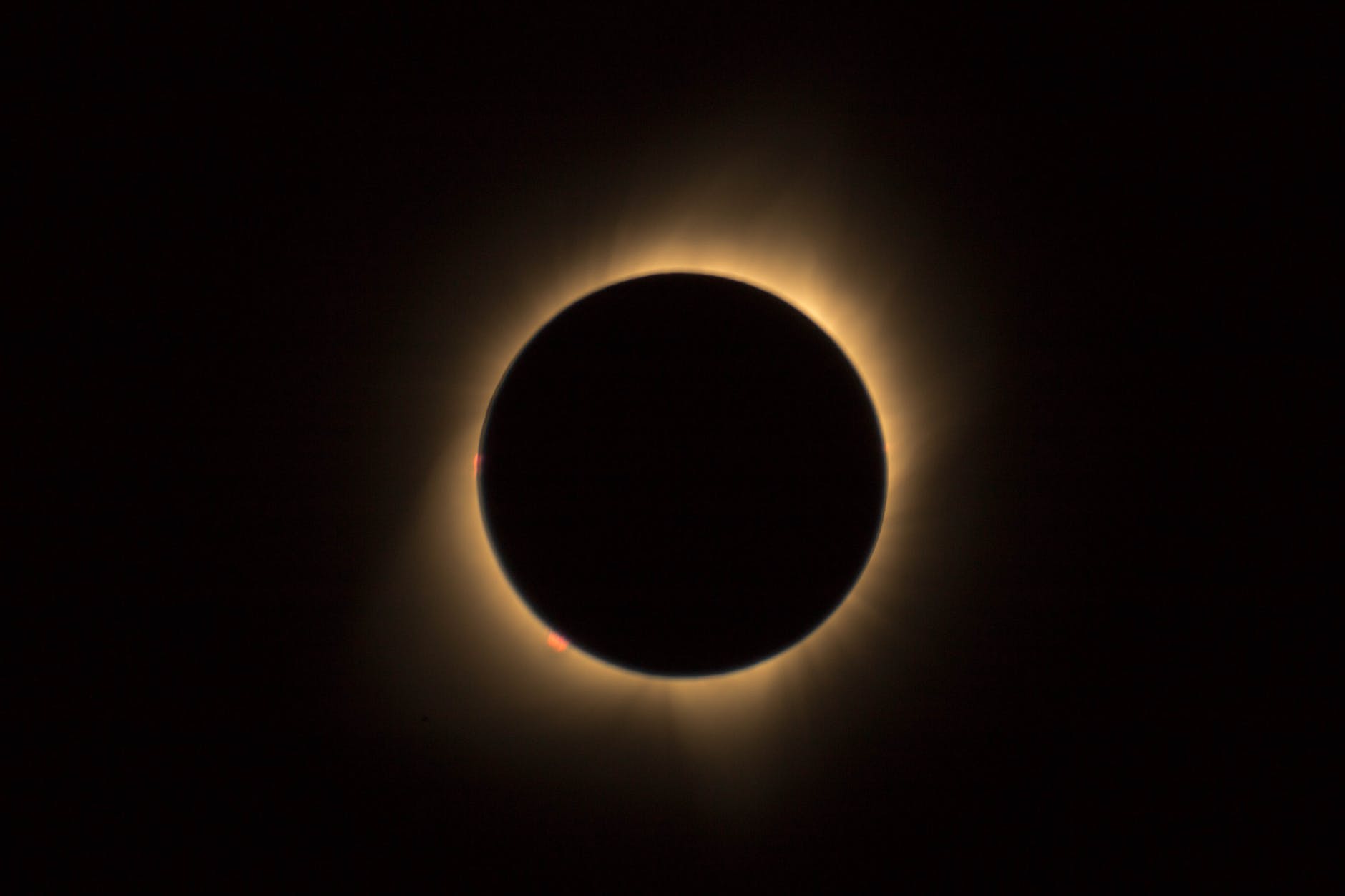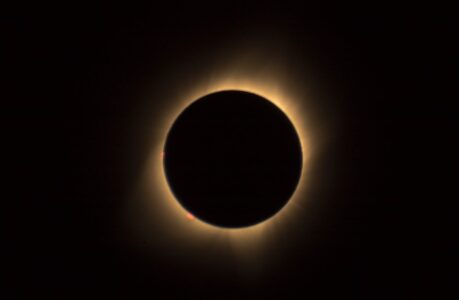Introduction
A solar eclipse is one of the most awe-inspiring natural phenomena known to humanity. The enchanting dance of the moon blocking the radiant sun, casting a temporary shadow upon the Earth, captivates people from all walks of life. However, observing a solar eclipse requires utmost care and precaution, as looking directly at the sun can cause severe eye damage or even blindness. In this comprehensive guide, we will delve into the seven essential steps that will allow you to safely witness and appreciate the breathtaking grandeur of a solar eclipse.
What is a Solar Eclipse?
A solar eclipse occurs when the moon comes between the sun and the Earth, causing the moon’s shadow to be cast upon our planet’s surface. This occurs due to the perfect alignment of the sun, moon, and Earth. Unlike lunar eclipses, which happen when the Earth casts its shadow on the moon, solar eclipses are rarer and more challenging to witness from a specific location on Earth.
There are three main types of solar eclipses: total, partial, and annular. In a total solar eclipse, the moon completely covers the sun, leaving only the sun’s corona visible. This phase is the most remarkable and mesmerizing, with the sky darkening, and stars becoming visible during the few minutes of totality. A partial solar eclipse occurs when the moon only covers a portion of the sun, while an annular solar eclipse happens when the moon covers the sun’s center, leaving a ring-like appearance of the sun’s outer edge visible. The type of eclipse experienced depends on the viewer’s location and the alignment of the celestial bodies.
How Often Do Solar Eclipses Happen?
Solar eclipses are relatively rare events, occurring only a few times a year globally. However, their visibility is limited to specific geographic regions, making them even more elusive for some observers. On average, there are two to five solar eclipses annually. Total solar eclipses, which are the most sought-after and captivating, occur roughly every 18 months at a given location on Earth. However, the path of totality, the area where the total eclipse is visible, is relatively narrow, often spanning just a few dozen miles.
Partial solar eclipses, on the other hand, are more frequent and can be observed from a broader area on Earth. Annular solar eclipses, though less common than total and partial eclipses, happen more frequently than total eclipses due to the specific alignment required for each type.
1. Educate Yourself About Solar Eclipses
Knowledge is the key to unlocking the full potential of this celestial event. Before you set out to observe a solar eclipse, take the time to educate yourself about the science behind it. Understanding the mechanics of solar eclipses will enrich your experience and deepen your appreciation for the cosmic dance taking place overhead.
Learning about the different types of solar eclipses, the roles of the sun, moon, and Earth in creating this phenomenon, and the rarity of each type will enhance your anticipation for the next eclipse. You can find a wealth of information in books, documentaries, online articles, and educational resources from reputable astronomical organizations.
2. Plan Your Eclipse Observation
Preparation is crucial for a successful and safe solar eclipse viewing. Start by identifying upcoming solar eclipses and their locations. Websites, apps, and astronomical organizations often provide reliable information on solar eclipses, including their dates, times, and the areas where they will be visible. Depending on your location, you may need to travel to witness the eclipse in its totality, which is the most mesmerizing phase.
Make sure to check the weather forecast for your chosen observation spot well in advance. Cloud cover can obstruct your view, so it’s essential to select a location that offers a good chance of clear skies during the eclipse.
3. Acquire the Right Viewing Equipment
Never attempt to observe a solar eclipse with the naked eye, sunglasses, or improvised filters like CDs or DVDs. These methods do not provide sufficient protection against the intense solar radiation, which can cause severe damage to your eyes. Instead, invest in proper solar viewing equipment, such as solar filters and solar-viewing glasses certified to meet the ISO 12312-2 international safety standard. These specially designed filters block harmful ultraviolet, infrared, and visible light, allowing you to safely observe the sun.
Solar filters can be attached to telescopes, binoculars, or cameras, enabling you to magnify the eclipse and capture stunning details. Always ensure that your solar filters are in excellent condition and free from any scratches or damage that could compromise their effectiveness.
4. Practice Safe Solar Observation Techniques
Mastering the art of safe solar observation is crucial to safeguarding your eyes during a solar eclipse. Before the main event, practice using your solar viewing equipment to familiarize yourself with its operation and limitations. Avoid any temptation to look directly at the sun without proper protection, even during a partial eclipse. The intensity of the sun’s rays can still cause irreparable damage to your eyes.
Always ensure that children are under adult supervision when observing the sun. Teach them about the risks associated with looking at the sun directly and the importance of using solar viewing glasses or filters.
5. Choose a Suitable Observation Spot
Selecting the right observation spot can significantly enhance your solar eclipse experience. Look for an unobstructed location with a clear view of the sun, such as a park, field, or open area, away from tall buildings and trees that might cast shadows. Consider your comfort as well, as solar eclipses can last for several hours. Bring along chairs, blankets, or a portable canopy to create a relaxing and enjoyable environment while you wait for the eclipse to unfold.
Remember that the path of totality, where the total solar eclipse is visible, is often narrow. If you want to experience the awe-inspiring beauty of a total solar eclipse, be prepared to travel to the designated area along the eclipse’s path.
6. Capture the Eclipse Through Photography
Preserving the memories of a solar eclipse is a wonderful way to relive the experience and share it with others. With the right equipment and precautions, you can safely photograph the solar eclipse. However, photographing the sun directly without proper filters can damage your camera’s sensor and your eyes. Invest in a solar filter designed for photography or use your solar-viewing glasses in front of your camera’s lens. Alternatively, capture the eclipse’s indirect effects, such as the mesmerizing shadows created by the overlapping leaves on trees.
If you plan to photograph the eclipse through a telescope or binoculars, ensure that you have the appropriate solar filters for these instruments as well. Solar filters must be placed in front of the telescope’s objective lens or aperture, never at the eyepiece.
7. Join Solar Eclipse Viewing Events
Experiencing a solar eclipse in the company of others who share your excitement can elevate the event to a whole new level. Many cities and astronomical societies organize solar eclipse viewing events, complete with knowledgeable guides and powerful telescopes equipped with solar filters. These gatherings offer a chance to learn from experienced astronomers, engage in informative discussions, and make new friends who share your passion for the cosmos.
Attending a solar eclipse viewing event also allows you to witness the eclipse through different types of telescopes, capturing different perspectives and details of the sun’s corona and prominences. Moreover, experts present at these events can answer your questions and provide valuable insights about the celestial mechanics at play during a solar eclipse.
Conclusion
Solar eclipses are awe-inspiring celestial events that remind us of the vastness and beauty of our universe. Witnessing a solar eclipse is a magical experience, but it demands careful planning and adherence to safety guidelines. By educating yourself about solar eclipses, obtaining the right viewing equipment, practicing safe observation techniques, choosing a suitable observation spot, and possibly attending eclipse viewing events, you can safely immerse yourself in this cosmic spectacle.
So, mark your calendars for the next solar eclipse and get ready to be captivated by the sublime union of the sun and moon. Let this celestial show fill you with wonder and inspire you to explore more of the magnificent universe that lies beyond our skies. Remember, observing a solar eclipse is not just about witnessing a breathtaking event; it’s about connecting with the cosmos and understanding our place in the grand scheme of things. So, keep your eyes protected, your mind open to the wonders of the universe, and prepare for an experience that will stay with you for a lifetime.

